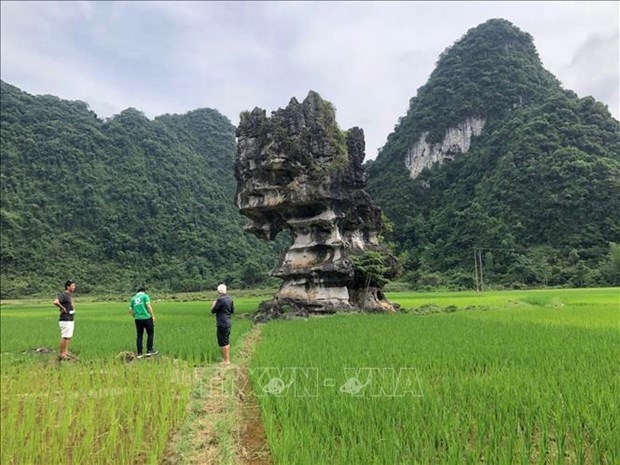Suggestions made to help optimise values of Global Geopark
Experts from the Global Geoparks Network (GGN) have made a fact-finding tour of Non Nuoc Cao Bang Geopark and gave several recommendations to northern Cao Bang province to help improve the park conservation and optimisation.

The trip was made ahead of the re-assessment of Non Nuoc Cao Bang slated for late July.
At a meeting with the provincial People’s Committee on May 25, Guy Martini, Chairman of the UNESCO Global Geoparks Council, said thanks to local authorities’ efforts and creativity, 84 percent of the workload on the construction and protection of the park has been done, and it is now ready for re-assessment.
He also pointed out several issues needing improvement, suggesting the province print the Non Nuoc Cao Bang Global Geopark logo on products of the “One Commune, One Product” (OCOP) programme so as to popularise the site and encourage visitors to buy local specialties, thereby helping improve people’s livelihoods.
Martini spoke highly of the formation of a tour linking Non Nuoc Cao Bang with Dong Van Karst Plateau, another global geopark in the northernmost province of Ha Giang, which will help further tap into Non Nuoc Cao Bang’s values and attract tourists.
Pham Quang Vinh, Secretary General of the Vietnam National Commission for UNESCO and Director of the Foreign Ministry’s Department of Cultural Diplomacy and UNESCO, said to bring into play the geopark’s values, it is necessary to maintain traditional cultural festivals, develop branded products, combine geopark tourism with cultural tourism, and boost communications to raise public awareness.
He also underlined the need to encourage businesses’ engagement in the park protection and development, improve the management board’s capacity, and popularise the province’s images to domestic and international tourists.
Non Nuoc Cao Bang was recognised as a member of the UNESCO Global Geoparks Network in 2018.
About 300 kilometres from Hanoi, the geopark covers over 3,000 sq.km. and is home to fossils, ocean sediment, volcanic rocks, minerals and karst landscapes, which can give researchers an insight into the 500 million years of the earth’s history. It is also well known for its rich biodiversity and many indigenous species of fauna and flora.
This is the second UNESCO-recognised global geopark in Vietnam after Dong Van Karst Plateau in Ha Giang, which received the honour in 2010.
